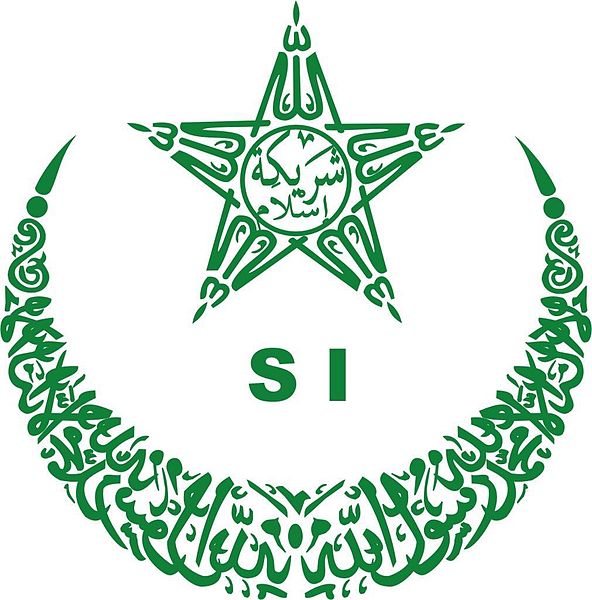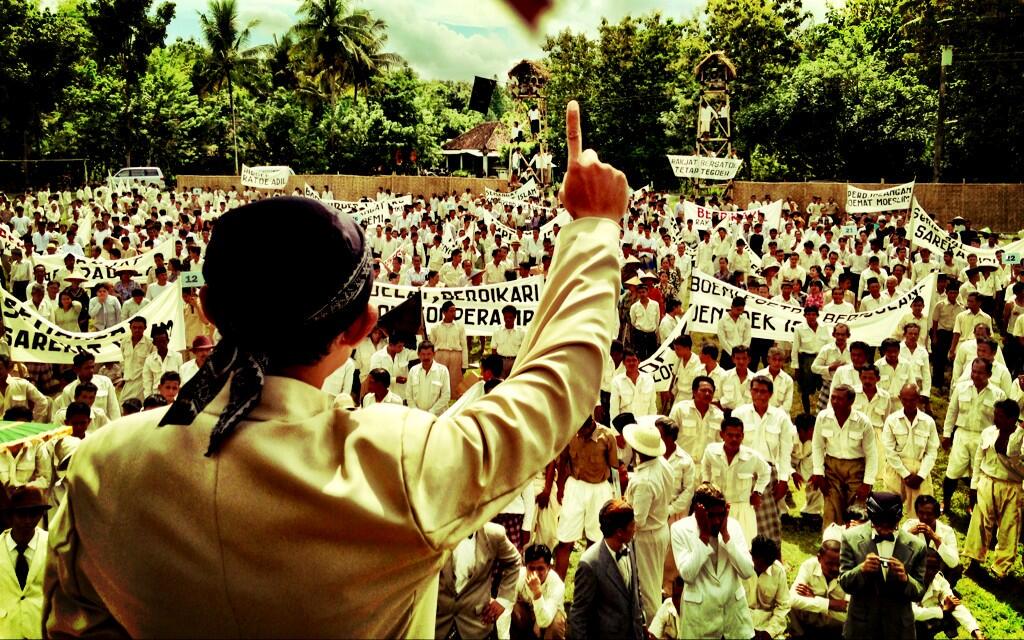 |
| Logo of Sarekat Islam |
The Sarekat Islam (Islamic Association), established in 1911, was one of the earliest political parties to have broad appeal in Indonesia.There was need for an organized merchant association in the face of competition from the Chinese mercantile community.
A religious motivation was also present because of increasing proselytizing activities of Christian missionaries. Sarekat Islam had many able leaders, and the most notable was Umar Sayed Tjokroaminoto (1882–1935), the ratu adil (savior prince). His charismatic personality and his message of improving happiness and the religious lives of people attracted many followers. His house became a center of political, social, and cultural activities.
Leaders like Tjokroaminoto, Abdul Muis, Abikusno Tjokrosujoso, and Hadji Agus Salim carried on a mission of fostering economic cooperation of indigenous merchants against the Chinese, uplifting material happiness, and defending Islam against missionaries.
 |
 |
The Sarekat Islam had a moderate program of socialism with emphasis on gatong rajong (group spirit). Capitalism was viewed as responsible for the woes of Indonesia, which was essentially a Chinese and European enterprise.
Initially, the party did not venture into the political realm so as not to incur the wrath of the Dutch, and at its first congress, held at Solo (Surakarta) in 1913, it declared in clear-cut terms that it was not against the colonial government.
As a heterogeneous organization, it had among its followers peasants, batik traders, bankers, the santri, or orthodox, Muslim sect, priyai (lesser nobility), traditionalist abangans of Java, and others. The Sarekat Islam was blamed for the agitation that occurred in Java in 1919.
 |
| Group portrait at a meeting of the SI |
With members professing divergent aims, the direction of Sarekat Islam became varied. and splinter groups arose. The traditional leadership's commitment to religion came under criticism by the left-leaning members of Indische Sociaal Democratische Vereeniging (the Indies Social Democratic Association), which endeavored toward a communist agenda. The Bolshevik Revolution had triumphed in Russia in 1917, and the first communist state had become a reality, which encouraged communist movements in various parts of the globe.
The Democratic Association itself was divided in 1920 with the formation of Partai Kommunist Indonesia (Communist Party of Indonesia), which wanted the Sarekat Islam to renounce its moderate policies. At the sixth congress of the Sarekat Islam in 1921, Salim brought out a resolution prohibiting the members of Sarekat from joining other parties.
The Communists were expelled. A Red Sarekat Islam was formed within the fold of the Communist Party, and this later became Sarekat Rakjat (Peoples Association). A turning point had occurred in the Indonesian nationalist movement, and it was accepted that traditional concepts and Western ideologies could not go together. The Sarekat attempted to broaden its base and adopted measures of noncooperation with the colonial government. It organized movements of youth and women.
The leadership of Sarekat tried its best to interpret Marxist doctrine in its own way; Salim was of the opinion that the Prophet had followed Marxist ideas. Even Tjokroaminoto took a mystical approach, saying that the ratu adil would appear in the form of socialism.
 |
| Tjokroaminoto and Sarekat Islam |
But the savior did not appear, and many members joined different parties according to their ideologies. Sarekat members flocked to the Communist Party, Nahdatul Ulama (1926), and the Indonesian Nationalist Party (1927).
In the 1930s there were more divisions over the question of collaborating with the colonial government. The absence of the development of a clear-cut ideology became the most important factor in the party's failure. It continued to function as a minor party with the new name of Partai Sarekat Islam until 1973.